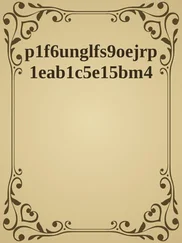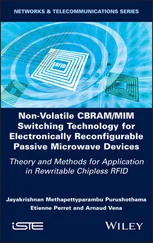Joel P. Dunsmore - Handbook of Microwave Component Measurements
Здесь есть возможность читать онлайн «Joel P. Dunsmore - Handbook of Microwave Component Measurements» — ознакомительный отрывок электронной книги совершенно бесплатно, а после прочтения отрывка купить полную версию. В некоторых случаях можно слушать аудио, скачать через торрент в формате fb2 и присутствует краткое содержание. Жанр: unrecognised, на английском языке. Описание произведения, (предисловие) а так же отзывы посетителей доступны на портале библиотеки ЛибКат.
- Название:Handbook of Microwave Component Measurements
- Автор:
- Жанр:
- Год:неизвестен
- ISBN:нет данных
- Рейтинг книги:5 / 5. Голосов: 1
-
Избранное:Добавить в избранное
- Отзывы:
-
Ваша оценка:
- 100
- 1
- 2
- 3
- 4
- 5
Handbook of Microwave Component Measurements: краткое содержание, описание и аннотация
Предлагаем к чтению аннотацию, описание, краткое содержание или предисловие (зависит от того, что написал сам автор книги «Handbook of Microwave Component Measurements»). Если вы не нашли необходимую информацию о книге — напишите в комментариях, мы постараемся отыскать её.
Handbook of Microwave Component Measurements — читать онлайн ознакомительный отрывок
Ниже представлен текст книги, разбитый по страницам. Система сохранения места последней прочитанной страницы, позволяет с удобством читать онлайн бесплатно книгу «Handbook of Microwave Component Measurements», без необходимости каждый раз заново искать на чём Вы остановились. Поставьте закладку, и сможете в любой момент перейти на страницу, на которой закончили чтение.
Интервал:
Закладка:
1 Introduction to Microwave Measurements
“To measure is to know.” 1 This is a book about the art and science of measuring microwave components. While this work is based entirely on science, there is some art in the process, and the terms skilled‐in‐the‐art and state‐of‐the‐art take on particular significance when viewing the task of measuring microwave components. The goal of this work is to provide the latest, state‐of‐the‐art methods and techniques for acquiring the optimum measurements of the myriad of microwave components. This goal naturally leads to the use of the vector network analyzer (VNA) as the principal test equipment, supported by the use of power meters, spectrum analyzers (SAs), signal sources and noise sources, impedance tuners, and other accessories.
Note here the careful use of the word optimum ; this implies there are trade‐offs between the cost and complexity of the measurement system, the time or duration of the measurement, the analytically computed uncertainty and traceability, and some heretofore unknown intangibles that all affect the overall measurement. For the best possible measurement, ignoring any consequence of time or cost, one can often go to national standards laboratories to find these best methods, but they would not suit a practical or commercial application. Thus, here the attempt is to strike an optimum balance between minimal errors in the measurement and practical consequences of the measurement techniques. The true value of this book is in providing insight into the wide range of issues and troubles that one encounters in trying to carefully and correctly ascertain the characteristics of one's microwave component. The details have been gathered from decades of experience in hundreds of direct interactions with actual measurements; some problems are obvious and common, and others are subtle and rare. It is hoped that the reader can use this handbook to avoid many hours of unproductive test time.
For the most part, the mathematical derivations in this book are intended to provide the reader with a straightforward connection between the derived values and the underlying characteristics. In some cases, the derivation will be provided in full if it is not accessible from existing literature; in other cases, a reference to the derivation will be provided. There are extensive tables and figures, with key sections providing many of the important formulas. The mathematical level of this handbook is geared to a college senior or working engineer with the intention of providing the most useful formulas in an approachable way. As such, sums will be preferred to integrals; finite differences will be preferred to derivatives; and divs, grads, and curls will be entirely eschewed.
The chapters are intended to self‐standing for the most part. In many cases, there will be common material to many measurement types, such as the mathematical derivation of the parameters or the calibration and error‐correction methods, and these will be gathered in the introductory chapters, though well referenced in the measurement chapters. In some cases, older methods of historical interest are given (there are many volumes on these older techniques), but by and large only the most modern techniques are presented. The focus here is on the practical microwave engineer facing modern, practical problems.
1.1 Modern Measurement Process
Throughout the discussion of measurements, a six‐step procedure will be followed that applies to most measurement problems. When approaching a measurement, these steps are as follows:
Pretest: This important first step is often ignored, resulting in meaningless measurements and wasted time. During the pretest, measurements of the device‐under‐test (DUT) are performed to coarsely determine some of its attributes. During pretest, it is also determined if the DUT is plugged in, turned on, and operating as expected. Many times the gain, match, or power handling is discovered to be different than expected, and much time and effort can be saved by finding this out early.
Optimize: Once the coarse attributes of the device have been determined, the measurement parameters and measurement system can be optimized to give the best results for that particular device. This might include adding an attenuator to the measurement receivers, adding booster amplifiers to the source, or just changing the number of points in a measurement to capture the true response of the DUT. Depending upon the device's particular characteristic response relative to the system errors, different choices for calibration methods or calibration standards might be required.
Calibrate: Many users will skip to this step, only to find that something in the setup does not provide the needed conditions and they must go back to the first step, retest, and optimize before recalibration. Calibration is the process of characterizing the measurement system so that systematic errors can be removed from the measurement result. This is not the same as obtaining a calibration sticker for an instrument but really is the first step, the acquisition step of the error correction process that allows improved measurement results.
Measure: Finally, some stimulus is applied to the DUT, and its response to the stimulus is measured. During the measurement, many aspects of the stimulus must be considered, as well as the order of testing and other testing conditions. These include not only the specific test conditions but also pre‐conditions such as previous power states to account for non‐linear responses of the DUT.
Analyze: Once the raw data is taken, error correction factors (the application step of error correction) are applied to produce a corrected result. Further mathematical manipulations on the measurement result can be performed to create more useful figures of merit, and the data from one set of conditions can be correlated with other conditions to provide useful insight into the DUT.
Save data: The final step is saving the results in a useful form. Sometimes this can be as simple as capturing a screen dump, but often it means saving results in such a way that they can be used in follow‐up simulations and analysis.
1.2 A Practical Measurement Focus
The techniques used for component measurements in the microware world change dramatically depending upon the attributes of the components; thus, the first step in describing the optimum measurement methods is understanding the expected behavior of the DUT. In describing the attributes and measurements of microwave components it is tempting to go back to first principles and derive all the underlying mathematics for each component and measurement described, but such an endeavor would require several volumes to complete. One could literally write a book on the all the attributes of almost any single component, so for this book the focus will be on only those final results useful for describing practical attributes of the components to be characterized, with quotes and references of many results without the underlying derivation.
There have been examples of books on microwave measurements that focus on the metrology kind of measurements (Collier and Skinner 2007) made in national laboratories such as the National Institute for Standards and Technology (NIST, USA) or the National Physical Laboratory (NPL, UK), but the methods used there don't transfer well or at all to the commercial market. For the most part, the focus of this book will be on practical measurement examples of components found in commercial and aerospace/defense industries. The measurements focus will be commercial characterization rather than the kinds of metrology found in standards labs.
Also, while there has been a great deal written about components in general or ideal terms, as well as much academic analysis of these idealized components, in practice these components contain significant parasitic effects that cause their behavior to differ dramatically from that described in many textbooks. Unfortunately, these effects are often not well understood, or difficult to consider in an analytic sense, and so are revealed only during an actual measurement of a physical devices. In this chapter, the idealized analysis of many components is described, but the descriptions are extended to some of the real‐world detriments that cause these components' behavior to vary from the expected analytical response.
Читать дальшеИнтервал:
Закладка:
Похожие книги на «Handbook of Microwave Component Measurements»
Представляем Вашему вниманию похожие книги на «Handbook of Microwave Component Measurements» списком для выбора. Мы отобрали схожую по названию и смыслу литературу в надежде предоставить читателям больше вариантов отыскать новые, интересные, ещё непрочитанные произведения.
Обсуждение, отзывы о книге «Handbook of Microwave Component Measurements» и просто собственные мнения читателей. Оставьте ваши комментарии, напишите, что Вы думаете о произведении, его смысле или главных героях. Укажите что конкретно понравилось, а что нет, и почему Вы так считаете.












